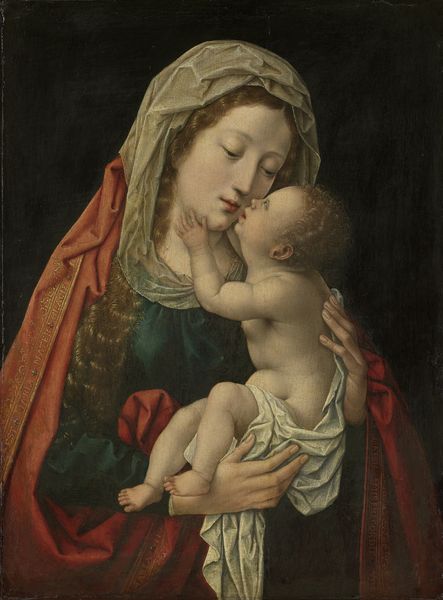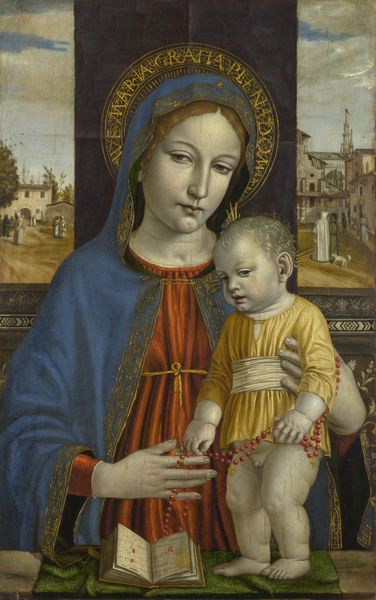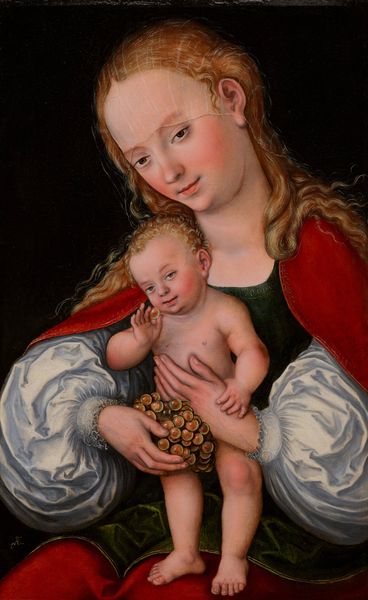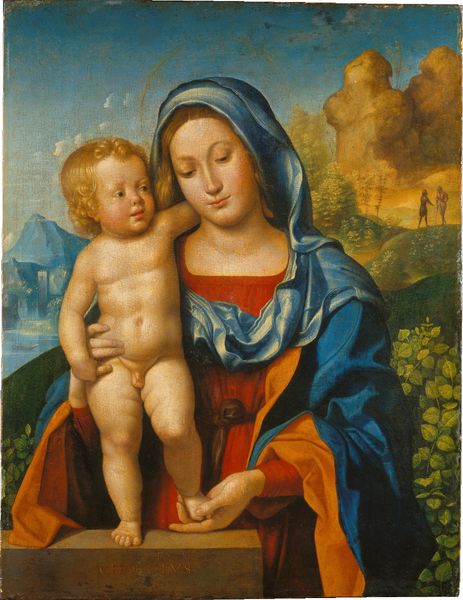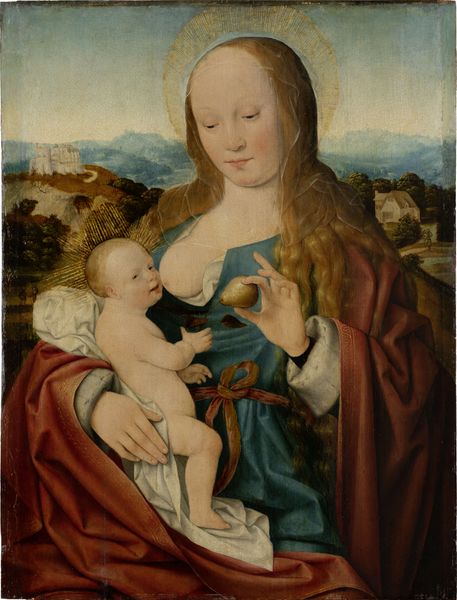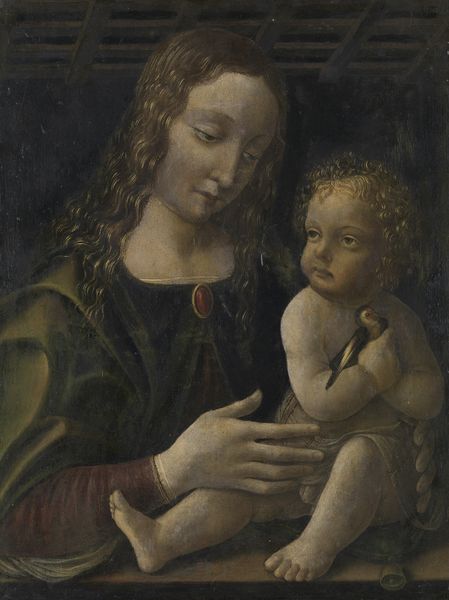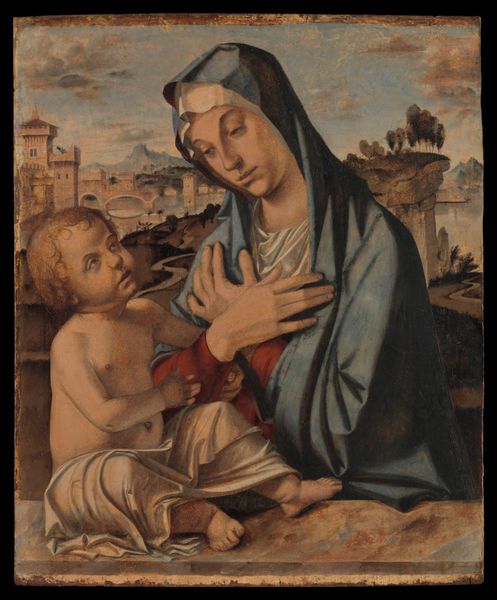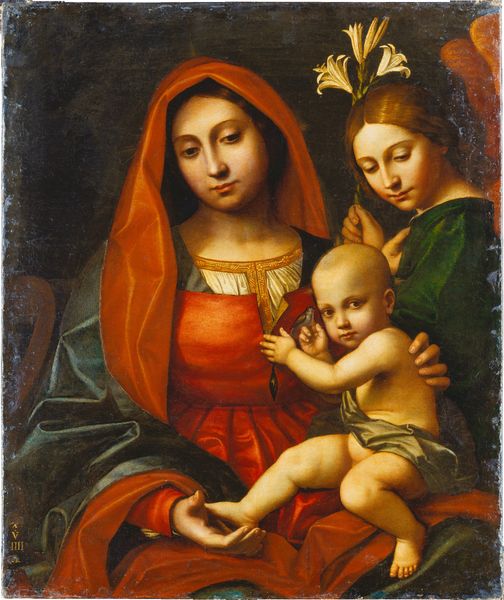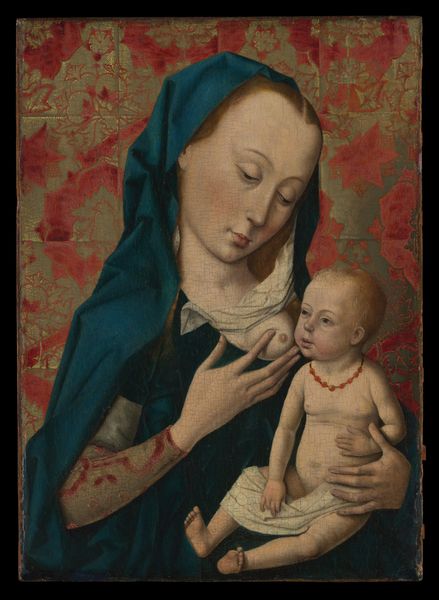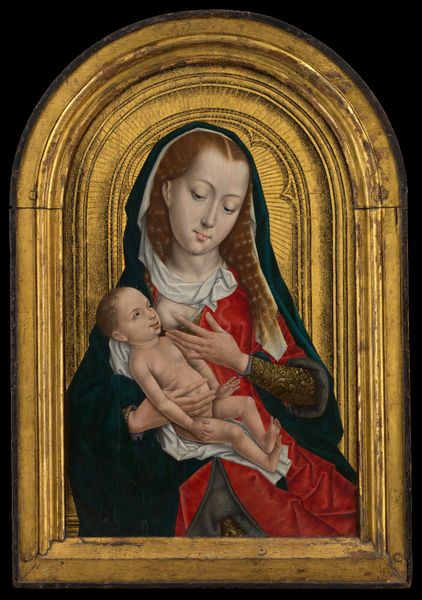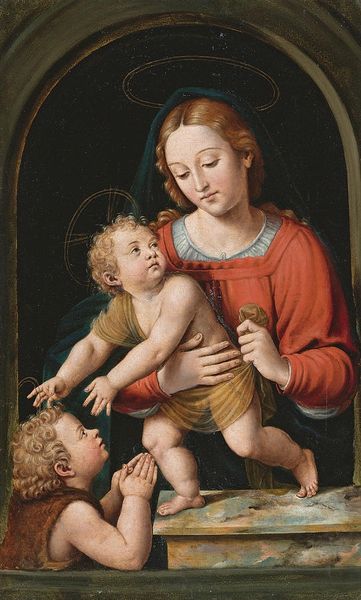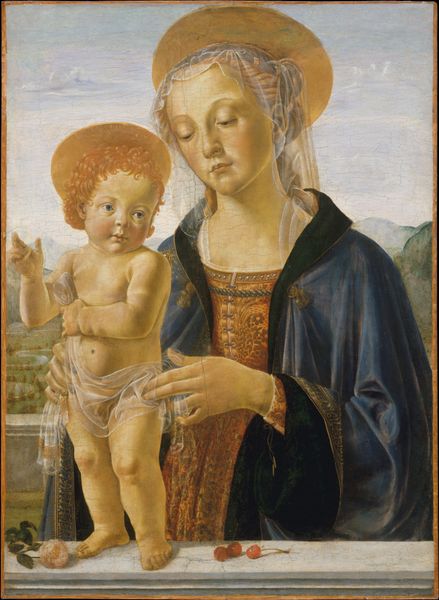
painting, oil-paint
#
portrait
#
painting
#
oil-paint
#
figuration
#
oil painting
#
northern-renaissance
#
italian-renaissance
Dimensions: 21 × 15 7/8 in. (53.4 × 40.2 cm)
Copyright: Public Domain
Editor: Here we have Jan Gossart’s “Virgin and Child,” an oil painting from around 1520. It’s striking how Madonna appears almost…lifeless, despite the rich colors. What do you see in this piece? Curator: I'm immediately drawn to the halos. Not just the usual flat gold disc, but radiating lines suggesting divine light. This emanation echoes back through centuries of iconic representation, a visual shorthand for holiness. Think of Byzantine mosaics, their golden backgrounds – the lingering glow of faith visually transmitted across time. But Gossart here renders it more subtle, perhaps influenced by the burgeoning naturalism of the Renaissance. How do these traditional symbols resonate with a more modern sensibility, do you think? Editor: I hadn't considered the earlier influences, but the subtle halo does feel like a toned-down version. Does that mean its emotional power is diminished too? Curator: Not necessarily. Consider how a whispered secret can hold more power than a shouted declaration. The Virgin's downcast gaze, her stillness - they speak to a profound inner contemplation. Even the child's gesture, raising his hand in what could be a blessing, connects back to those ancient visual languages of power and grace. It is this blending of familiarity and alteration, perhaps, that invites us to see it anew. What aspects of its visual language linger in contemporary representations of motherhood or divinity? Editor: I suppose these kinds of images remain pervasive even today. The visual language is constantly being reused and reinterpreted. I'll definitely keep that in mind moving forward.
Comments
No comments
Be the first to comment and join the conversation on the ultimate creative platform.
